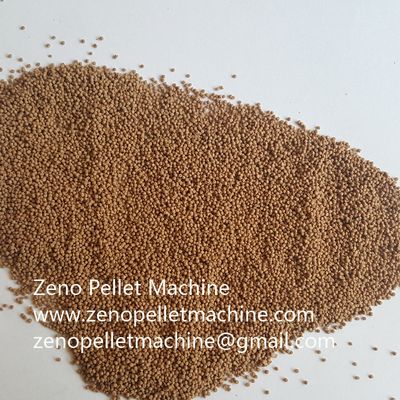

- Home
- Companies
- Zeno Pellet Machine - Zhengzhou Zeno ...
- Articles
- How to make fish feed pellet

How to make fish feed pellet
Manufactured feeds is produced by feed pellet machine ,which is an important part of modern commercial aquaculture, providing the balanced nutrition needed by farmed fish. The feeds, in the form of granules or pellets, provide the nutrition in a stable and concentrated form, enabling the fish to feed efficiently and grow to their full potential.
The nutritional content of feed pellet can not only affect the normal growth of fish and shrimp, but also affect the immunity and disease resistance of fish and shrimp. The purpose of feeding the fish is to provide the necessary nutritional requirements for the fish to maintain good health, optimal growth, and optimal yield, and to minimize the waste brought to the environment for the best profit.Good nutritional quality and physical properties of feed are the key to fish farming technology to achieve production and economic goals.
Many of the fish farmed more intensively around the world today are carnivorous, for example Atlantic salmon, trout, sea bass,and turbot. In the development of modern aquaculture, starting in the 1970s, fish meal and fish oil were key components of the feeds for these species. They are combined with other ingredients such as vegetable proteins, cereal grains, vitamins and minerals and formed into feed pellets or flakes. Wheat, for example, is widely used as it helps to bind the ingredients in the pellets.
Other forms of fish feed being used include feeds made entirely with vegetable materials for species such as carp, moist feeds preferred by some species (easier to make but more difficult to store), and trash fish-that is fish caught and fed directly to larger species being raised in aquaculture pens.
Modern fish feeds are made by grinding and mixing together ingredients such as fishmeal, vegetable proteins and binding agents such as wheat. Water is added and the resulting paste is extruded through fish feed extruder machine. The diameter of the holes sets the diameter of the pellets, which can range from 0.9~15mm. As the feed is extruded it is cut to form pellets of the required length. The pellets are dried and oils are added. Adjusting parameters such as temperature and pressure enables the manufacturers to make pellets that suit different fish farming methods, for example feeds that float or sink slowly and feeds suited to recirculation systems. The dry feed pellets are stable for relatively long periods, for convenient storage and distribution. Feeds are delivered in bulk, in large bags—usually one tonne, or in 25 kilogram bags. Smaller quantities of specialist feeds are supplied for use in fish hatcheries.
